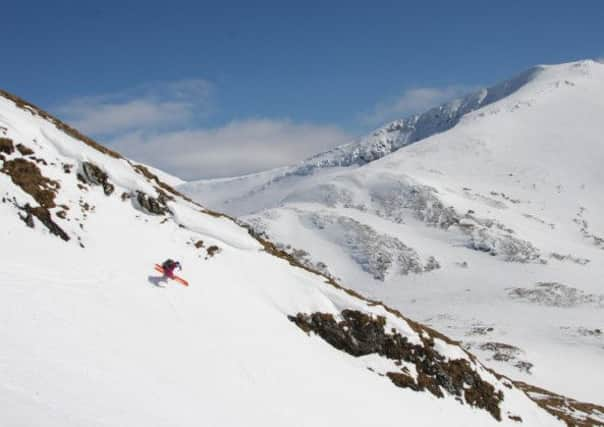Research is top priority when going off-piste


But in spite of these dire forecasts, for three out of the last four winters we’ve had bumper snowfalls, and many veteran skiers describe last season as one of the best in living memory.
All this extra snow hasn’t just been good news for the ski centres, it’s also led to a noticable spike in the popularity of ski touring – that is, people striking off into the hills under their own steam in order to score fresh tracks away from the crowds. But more snow also means more avalanche danger, and as growing numbers of skiers and boarders venture off-piste, so the chances of somebody being caught out also start to increase.
Advertisement
Hide AdLast year, tragically, Clackmananshire skier Daniel Maddox was killed in an avalanche while skiing just outside the resort boundary at Glencoe. The fact he was an experienced backcountry skier gave the community pause for thought: if it could happen to him, it could happen to anyone.
Many backcountry skiers now carry the “holy trinity” of avalanche beacon, shovel and probe so that they can rescue each other if they get avalanched, and some ski centres have installed transceiver parks so people can practise search techniques. All of which is great, but by far the best way to survive an avalanche is to avoid getting caught in one in the first place.
Liam Irving of Aviemore-based Cairngorm Adventure Guides has clocked up hundreds of hours in the Scottish hills in winter, and he understands the dangers as well as anyone. Risk assessment, he says, should ideally begin at home.
“Before you head out on the hill you want to be checking the weather forecast and also the avalanche forecast,” he says. “And it’s one thing to check those, but it’s another thing to be able to relate the information that’s on those to a map and then work out how that affects the journey you’re planning to go on.”
The avalanche report, produced daily by the sportscotland Avalanche Information Service (SAIS), is the critical bit of information you have to absorb, says Irving. These charts tell you how likely avalanches are to occur at a given altitude and on a given aspect so you know which areas to avoid.
Irving says you should have an idea of what the mountains should look like before you arrive and once on the hill, check if you are seeing what you expected, and if not, why not? “Has the weather changed, and if so, what effect is that having on the avalanche risk? Changes in wind speed and direction, temperature and precipitation levels all affect the risk.”
Advertisement
Hide AdOnce you’ve begun your ascent, there are various tell-tale signs that suggest the snowpack might be unstable: cracks appearing above your skis or in between your ski tracks are evidence of windslab – a poorly-bonded layer of snow caused by high winds. It should also be possible to see which slopes have been scoured by the wind, and which ones have powder snow deposited on them, increasing the chances of a slide.
The trouble is, most backcountry skiers are looking to ski those exact same powder-laden leeward slopes. How do you decide whether the one you’re standing on is safe or not?
Advertisement
Hide Ad“It’s very, very difficult to make that decision safely,” says Irving. “For me, there isn’t really a black and white answer of ‘is this slope safe to ski or not?’ You have to make informed decisions based on the forecast, the current weather conditions and your personal experience on the day.”
• Cairngorm Adventure Guides provide ski mountaineering courses for all levels and abilities, cairngormadventureguides.co.uk; for the sportscotland Avalanche Information Service, see sais.gov.uk